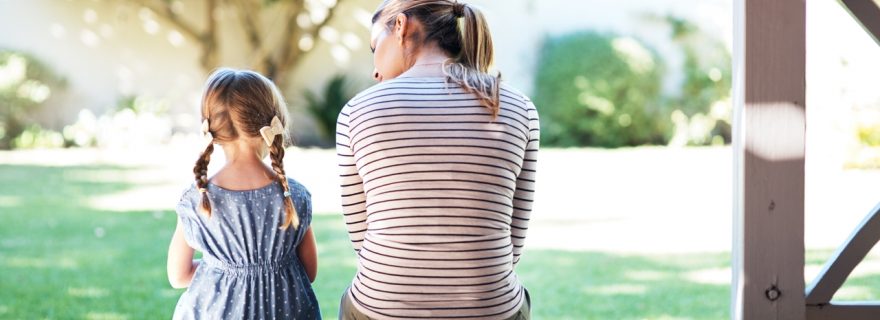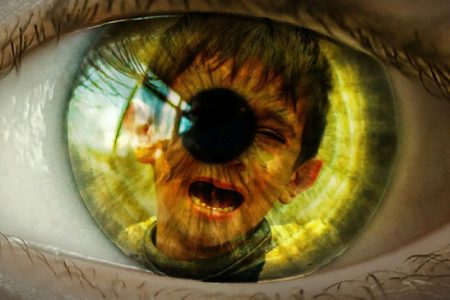Family Fears: 'Stay at home! If you leave the house you will catch COVID-19'
Children are exposed not only to a novel virus but also to their parents’ fears of the virus. Parents’ fears can easily be passed on to their children. How does this happen and can we prevent it?
Children are exposed not only to a novel virus, but also to their parents’ fears of the virus. While parents get information about COVID-19 from a variety of sources – including government officials, public health authorities (such as the Dutch National Institute for Public Health and the Environment, RIVM), social media outlets, newspapers, and friends and colleagues – children frequently learn about the virus from their parents. Importantly, parents do not only present their children with the facts about the virus: the facts come wrapped up with parents’ attitudes and behaviours towards the virus.
Fears can be passed on from parents to children
Everyday, children observe their parents’ behaviours and listen to their thoughts and opinions. Generally, children can learn from their parents’ fears in two ways. The first is learning by observation. Imagine parents who avoid all social contact, are reluctant to leave the house at all, or become very anxious every time they talk about the virus. Being exposed to fearful behaviour, the child may start modelling their parents’ behaviour (also known as Vicarious/Observational Learning). The second option is learning by instruction. Children can learn fearful or anxious responses as well as avoidance behaviours from parents verbally informing them of the threat and how to react (also known as Instruction Learning). Children learn to be fearful when the parents verbally communicate fears. This could entail, for example, parents repeatedly instructing their children on how to guard against COVID-19 with phrases like “Stay at home! If you leave the house you will catch the virus”, “Avoid people who cough: they are dangerous”, or “Always wear a face mask; otherwise you will catch the virus”.
Are Family Fears the “New Normal”?
At the beginning of the pandemic in the Netherlands, parents were advised to be careful, to socially distance their families, and stay at home. Being careful and wary of the virus is adaptive; it keeps the virus out of the house. However, what happens when the guidelines change, or when new information is acquired? Do parents change their behaviour accordingly? Are they less worried and scared? Recent studies have revealed that children are less susceptible to the virus than was initially believed. Despite the relatively low risk, according to the NLtimes a survey among over 1,100 school directors revealed that during the first four days after primary schools re-opened “around 55 thousand pupils [didn’t] return to class”. According to the school directors, parents chose not to send their children back to school to prevent them from catching the virus.
At what point parents’ worries and fears about COVID-19 become maladaptive is difficult to say. Nevertheless, if children who are genetically susceptible to developing anxiety disorders are exposed to sustained anxious behaviour and communication from parents, this may aggravate their children’s anxious tendencies. Their fear of strangers, of leaving the house, or of going to school could worsen significantly. So what can parents do to ensure they don’t pass their fears on to their child?
Take-Home Message for Parents
- Anxiety Self-Check: Are you unable to stop worrying about the virus? Do you constantly feel overwhelmed and helpless about possibly catching the virus? These fears are easily passed on to your child. Find someone to talk to about your fears and worries, and find strategies to help you cope with them. If you allay your own fears, your child is less likely to fear the virus.
- Listen actively to your child: Your child may already have formed some thoughts or fears about the virus, by talking to friends or family. Ask what your child thinks about the virus, and allow your child to be open about their feelings.
- Be honest and calm: Don’t pretend there is no virus, but be honest about what is going on. When you discuss facts about the virus, think what your child is able to understand and do not overload them with information. Also be aware of your non-verbal communication, like body language and facial expressions. If you are not calm, maybe find another moment to discuss the topic, or if applicable ask for help from your partner.
- Include positive news: When discussing the virus do not only focus on negative and scary facts. Also include positive and inspiring news about people helping others in need, or talk about doctors who are trying to stop the virus from spreading.
Until now, we do not know how parents’ fears about COVID-19 affect their children on a daily basis, and whether their fear could trigger their children’s fear, or even the onset of anxiety disorders. Our new study, FACTS, sets out to investigate how children acquire information about COVID-19, and what role parents play in children learning to fear the virus. For more information about the study, check out Facebook or email FACTS@leidenuniv.nl.





